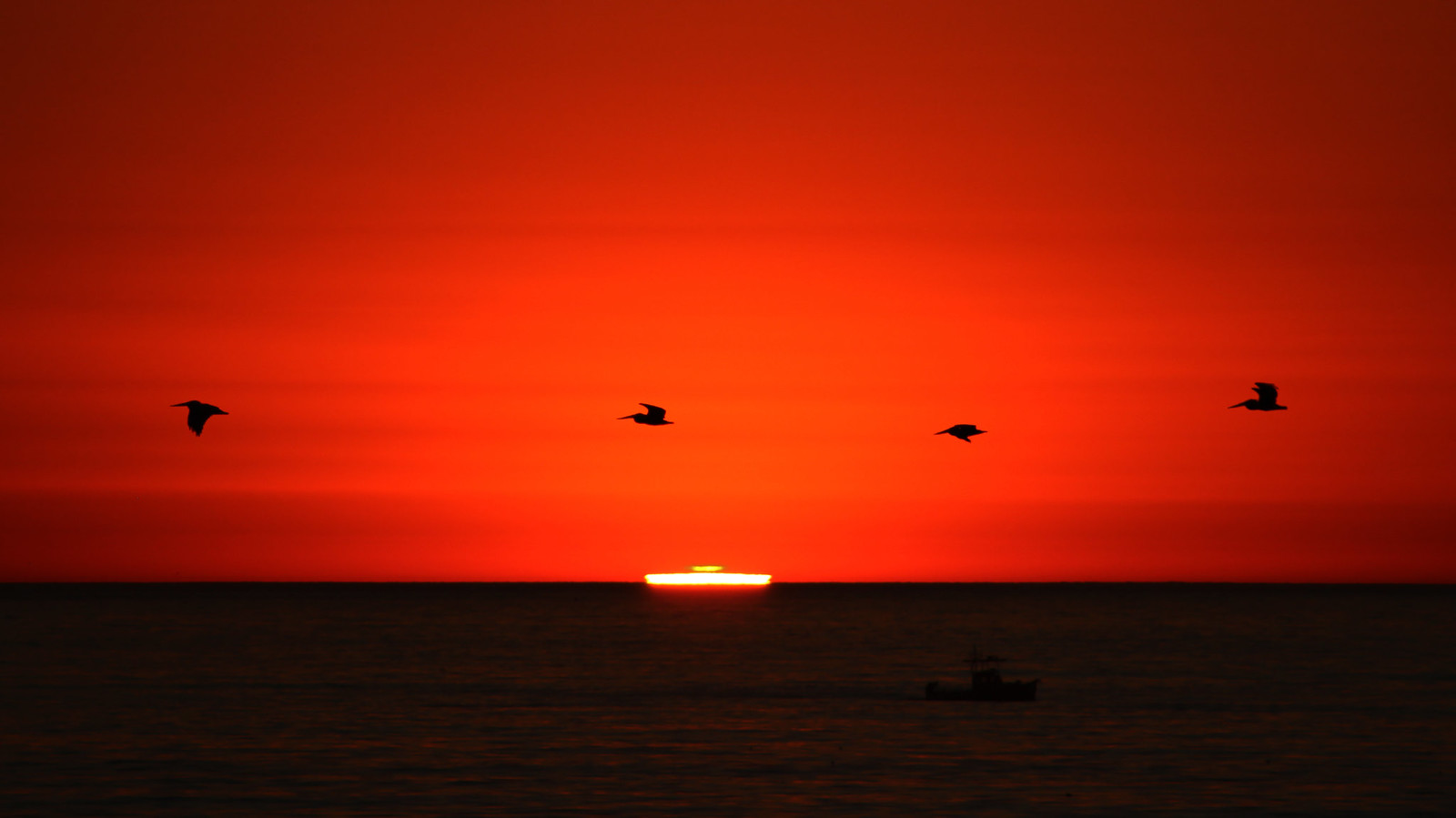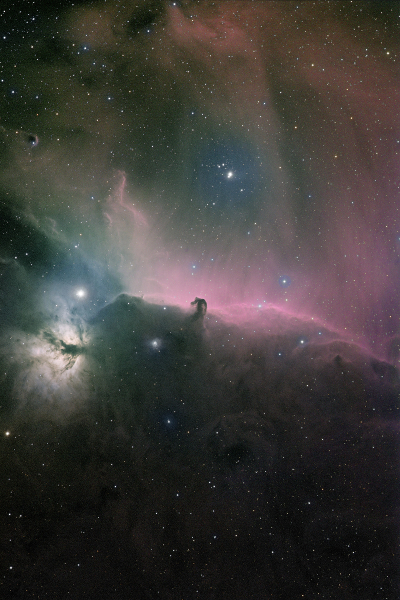Submissions: 2014 February
Submissions: 2014 February
__________________________________________________________________________________________________
Please post your images here.
Please see this thread before posting images; posting images demonstrates your agreement with
the possible uses for your image.
If hotlinking to an image, please ensure it is under 400K.
Hotlinks to images over 400K slow down the thread too much and will be disabled.
Thank you!
_________________________________________________________________________________________________
<- Previous submissions
[c]«« Discuss Anything in Astronomy «» Visit The Asterisk Main Page «» See Introductory Astonomy Lectures »»
«« Introduce Yourself «» Please Read the Rules »»[/c]
Please post your images here.
Please see this thread before posting images; posting images demonstrates your agreement with
the possible uses for your image.
If hotlinking to an image, please ensure it is under 400K.
Hotlinks to images over 400K slow down the thread too much and will be disabled.
Thank you!
_________________________________________________________________________________________________
<- Previous submissions
[c]«« Discuss Anything in Astronomy «» Visit The Asterisk Main Page «» See Introductory Astonomy Lectures »»
«« Introduce Yourself «» Please Read the Rules »»[/c]
A closed mouth gathers no foot.
-
Oleg Bryzgalov
- Ensign
- Posts: 73
- Joined: Tue Apr 26, 2011 8:45 am
- Location: Village Khlepcha near Kiev, Ukraine
- Contact:
Re: Submissions: 2014 February
Polar Ring Galaxy NGC660
2013, November
HiRes photo: http://olegbr.astroclub.kiev.ua/files/a ... lov_v4.jpg
Copyright: Oleg Bryzgalov, Ukraine
2013, November
HiRes photo: http://olegbr.astroclub.kiev.ua/files/a ... lov_v4.jpg
Copyright: Oleg Bryzgalov, Ukraine
-
Oleg Bryzgalov
- Ensign
- Posts: 73
- Joined: Tue Apr 26, 2011 8:45 am
- Location: Village Khlepcha near Kiev, Ukraine
- Contact:
Re: Submissions: 2014 February
Dwarf Elliptical Galaxy NGC205 (M110) in the Local Group
2013, November.
HiRes photo: http://olegbr.astroclub.kiev.ua/files/a ... zgalov.jpg
Copyright: Oleg Bryzgalov, Ukraine
2013, November.
HiRes photo: http://olegbr.astroclub.kiev.ua/files/a ... zgalov.jpg
Copyright: Oleg Bryzgalov, Ukraine
High Resolution Rosette Nebula Mosaic
I'm posting my latest image which has turned out to be a big and fun project for me. I wanted to shoot the Rosette but my field of view is too small to really do it any justice...so I tackled the idea of doing a four frame mosaic so that I could (barely) fit the entire thing. Here is the result of that effort.
I shot it as an HaRGB image and used the Hydrogen Alpha data as the luminance frame. This image is a bit of a departure from my usual processing routine in that I used PixInsight for much of the processing but the H-Alpha blending & LRGB combine were done in Photoshop CS5. I was much happier with the way that PS seemed to be a little less heavy handed in the blending of the data.
Of all the things that I've shot with the 6" refractor, this is my favorite thus far. I encourage you to take a look at the full resolution (28 megapixel) frame. My original plan was to shoot 16 H-Alpha frames and 8 each of the RGB for each panel. This put me at 96 hours of total exposure....so I went ahead and added a 17th H-Alpha frame for a nice round number of 100 hours. Thanks for looking.
For a lower bandwidth look - here's the full screen version
[image]http://astrob.in/75735/0/rawthumb/gallery/get.jpg[/image]
I shot it as an HaRGB image and used the Hydrogen Alpha data as the luminance frame. This image is a bit of a departure from my usual processing routine in that I used PixInsight for much of the processing but the H-Alpha blending & LRGB combine were done in Photoshop CS5. I was much happier with the way that PS seemed to be a little less heavy handed in the blending of the data.
Of all the things that I've shot with the 6" refractor, this is my favorite thus far. I encourage you to take a look at the full resolution (28 megapixel) frame. My original plan was to shoot 16 H-Alpha frames and 8 each of the RGB for each panel. This put me at 96 hours of total exposure....so I went ahead and added a 17th H-Alpha frame for a nice round number of 100 hours. Thanks for looking.
For a lower bandwidth look - here's the full screen version
[image]http://astrob.in/75735/0/rawthumb/gallery/get.jpg[/image]
- goldpaintphoto
- Ensign
- Posts: 44
- Joined: Sun May 15, 2011 11:08 pm
- Location: Mount Shasta, CA
- Contact:
Re: Submissions: 2014 February
River of Light
Credit: Brad Goldpaint
http://goldpaintphotography.com/ The Milky Way rises at Smith Rock State Park above the Crooked River in Central Oregon.
Credit: Brad Goldpaint
http://goldpaintphotography.com/ The Milky Way rises at Smith Rock State Park above the Crooked River in Central Oregon.
Re: Submissions: 2014 February
Comet Lovejoy and Shooting Star
Photograph taken at 6:49 AM (UTC) on Saturday 1 February 2014
Copyright: Bradford University
http://www.telescope.org/
Photograph requested to be taken and processed by: Kenneth Green
Photograph taken at 6:49 AM (UTC) on Saturday 1 February 2014
Copyright: Bradford University
http://www.telescope.org/
Photograph requested to be taken and processed by: Kenneth Green
Last edited by ufoken on Sun Feb 02, 2014 3:16 am, edited 3 times in total.
-
Wade Earle
Re: Submissions: 2014 February
Re: Submissions: 2014 February
Zodiacal light, Air glow and Venus
Copyright: Stéphan Gaumont-Guay
http://www.astrobin.com/users/AstroGG/
The picture was taken on the slopes of Mauna Kea at 2800 meters (near the Onizuka Center for International Astronomy Visitor Information Station) on July 9th 2013 with a Canon 60D and a wide angle lens.
We can see the slopes of Mauna Kea at the bottom right, Hulalai volcano at the bottom left-center, the zodiacal light, Venus (low on the horizon), the remaining light of the setting Sun and (if you look closely on the left, near the horizon) air glow (or night glow) as a greenish diffuse light.
Thank you!
Stephan

High resolution : http://www.flickr.com/photos/astrogg/12258789233/
Copyright: Stéphan Gaumont-Guay
http://www.astrobin.com/users/AstroGG/
The picture was taken on the slopes of Mauna Kea at 2800 meters (near the Onizuka Center for International Astronomy Visitor Information Station) on July 9th 2013 with a Canon 60D and a wide angle lens.
We can see the slopes of Mauna Kea at the bottom right, Hulalai volcano at the bottom left-center, the zodiacal light, Venus (low on the horizon), the remaining light of the setting Sun and (if you look closely on the left, near the horizon) air glow (or night glow) as a greenish diffuse light.
Thank you!
Stephan

High resolution : http://www.flickr.com/photos/astrogg/12258789233/
-
Florian Kainz
Re: Submissions: 2014 February
Attempting to replicate the Sun Stone of the Vikings
Maybe one of you skywatchers can help me with this…
Every now and then there’s a news article about how the Vikings may have had a "sun stone" that helped them navigate by telling them where the sun was, even on an overcast day or when the sun was below the horizon. Frequently such a statement is followed by theorizing that the sun stone might have been a mineral such as Iceland spar. This would have allowed a navigator determine whether the light from the sky was polarized, as well as the direction of the polarization. Generally missing from descriptions like that are details of how the sun stone might have been used in practice.
Finding a nice piece of Iceland spar (clear calcite) with polished faces for sale, we decided to find out if a sun stone could really work.
Calcite is birefringent. Upon entering a calcite crystal an unpolarized light ray is split into two rays with different polarization, and those rays travel through the crystal in slightly different directions. Looking through a piece of calcite one sees two images of everything on the other side. The images are offset from each other by a distance that depends on how thick the crystal is. If an incoming light ray is already polarized, then one or both of the rays that travel through the crystal will be attenuated somewhat. If the crystal is rotated, then there will be four orientations where the attenuation of the two rays is the same.
We made a device that we thought could work as a sun stone. A short cardboard tube has a lid on either end. One of the lids has a rectangular window near the center, approximately 3/4” by 3/16” in size. The calcite crystal is glued to the inside of the lid. A small magnifier is mounted in a hole at center of the lid at the other end of the tube.
A cross section, and a couple of photos of our device:
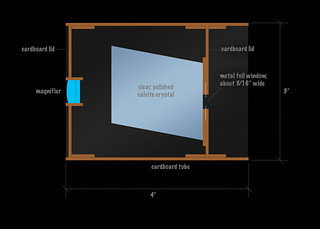
Testing the Viking Sun Stone - Schematic Cross Section by fksr, on Flickr

Testing the Viking Sun Stone - Iceland Spar Crystal by fksr, on Flickr
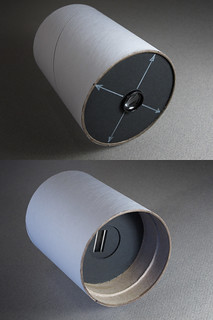
Testing the Viking Sun Stone - Sun Finder Fully Assembled by fksr, on Flickr
The Vikings didn’t have cardboard, and they probably didn’t know about magnifying glasses, but the cardboard tube could easily be replaced by a wooden box. The magnifier could be omitted altogether.
Looking into the magnifier and through the crystal, one sees two side by side images of the rectangular window. If the tube is pointed at a region of blue sky approximately 90 degrees away from the sun, where the light is strongly polarized, then the two rectangles will usually be different shades of blue. When the tube is rotated around its central axis, the color of each rectangle changes.
Here’s what that looks like:

Testing the Viking Sun Stone - Polarized Sky Light by fksr, on Flickr
There will be four orientations where the two rectangles have exactly the same brightness and hue. For each of those four directions we can mark the end of the tube with an arrow that points toward the sun.
Those arrows can be used to find the sun again later, even when we cannot see it directly, at least as long as the sky is blue. After turning the tube until the two rectangles are the same color, we have to figure out which of the four arrows is the one that points at the sun. Usually we can quickly rule out one or two of them. For example, when it is daytime, arrows that point toward the ground can be excluded. The remaining ambiguities can be resolved by observing multiple patches of the sky.
Of course, on a clear day one doesn’t need the sun stone because the sun is visible. However, at high latitudes the sun may be a short distance below the horizon for a significant portion of any 24-hour period. Testing our sun stone at dusk, we found that it still worked as long as the sky wasn’t so dark that we could no longer compare the brightness of the two rectangles.
Unfortunately, an overcast sky is quite different. When the cloud cover is dense enough to make it impossible to tell where the sun is by directly looking at the sky, light coming from the clouds is no longer polarized, at least not to a degree that one can detect with the sun stone. No matter at what part of the sky we looked at in our tests, and how we rotated the tube, the two images of the window were always the same shade of gray.
So… our version of the Viking sun stone does work in some situations, but it fails when it would be most useful, under an overcast sky. Is the sun stone likely just a myth, or can anyone think of an improvement or an alternative design that would work?
Maybe one of you skywatchers can help me with this…
Every now and then there’s a news article about how the Vikings may have had a "sun stone" that helped them navigate by telling them where the sun was, even on an overcast day or when the sun was below the horizon. Frequently such a statement is followed by theorizing that the sun stone might have been a mineral such as Iceland spar. This would have allowed a navigator determine whether the light from the sky was polarized, as well as the direction of the polarization. Generally missing from descriptions like that are details of how the sun stone might have been used in practice.
Finding a nice piece of Iceland spar (clear calcite) with polished faces for sale, we decided to find out if a sun stone could really work.
Calcite is birefringent. Upon entering a calcite crystal an unpolarized light ray is split into two rays with different polarization, and those rays travel through the crystal in slightly different directions. Looking through a piece of calcite one sees two images of everything on the other side. The images are offset from each other by a distance that depends on how thick the crystal is. If an incoming light ray is already polarized, then one or both of the rays that travel through the crystal will be attenuated somewhat. If the crystal is rotated, then there will be four orientations where the attenuation of the two rays is the same.
We made a device that we thought could work as a sun stone. A short cardboard tube has a lid on either end. One of the lids has a rectangular window near the center, approximately 3/4” by 3/16” in size. The calcite crystal is glued to the inside of the lid. A small magnifier is mounted in a hole at center of the lid at the other end of the tube.
A cross section, and a couple of photos of our device:

Testing the Viking Sun Stone - Schematic Cross Section by fksr, on Flickr

Testing the Viking Sun Stone - Iceland Spar Crystal by fksr, on Flickr

Testing the Viking Sun Stone - Sun Finder Fully Assembled by fksr, on Flickr
The Vikings didn’t have cardboard, and they probably didn’t know about magnifying glasses, but the cardboard tube could easily be replaced by a wooden box. The magnifier could be omitted altogether.
Looking into the magnifier and through the crystal, one sees two side by side images of the rectangular window. If the tube is pointed at a region of blue sky approximately 90 degrees away from the sun, where the light is strongly polarized, then the two rectangles will usually be different shades of blue. When the tube is rotated around its central axis, the color of each rectangle changes.
Here’s what that looks like:

Testing the Viking Sun Stone - Polarized Sky Light by fksr, on Flickr
There will be four orientations where the two rectangles have exactly the same brightness and hue. For each of those four directions we can mark the end of the tube with an arrow that points toward the sun.
Those arrows can be used to find the sun again later, even when we cannot see it directly, at least as long as the sky is blue. After turning the tube until the two rectangles are the same color, we have to figure out which of the four arrows is the one that points at the sun. Usually we can quickly rule out one or two of them. For example, when it is daytime, arrows that point toward the ground can be excluded. The remaining ambiguities can be resolved by observing multiple patches of the sky.
Of course, on a clear day one doesn’t need the sun stone because the sun is visible. However, at high latitudes the sun may be a short distance below the horizon for a significant portion of any 24-hour period. Testing our sun stone at dusk, we found that it still worked as long as the sky wasn’t so dark that we could no longer compare the brightness of the two rectangles.
Unfortunately, an overcast sky is quite different. When the cloud cover is dense enough to make it impossible to tell where the sun is by directly looking at the sky, light coming from the clouds is no longer polarized, at least not to a degree that one can detect with the sun stone. No matter at what part of the sky we looked at in our tests, and how we rotated the tube, the two images of the window were always the same shade of gray.
So… our version of the Viking sun stone does work in some situations, but it fails when it would be most useful, under an overcast sky. Is the sun stone likely just a myth, or can anyone think of an improvement or an alternative design that would work?
Re: Submissions: 2014 February
M63 - The Sunflower Galaxy
Image credits and Copyright: Paul Mortfield, Tom Zaranek
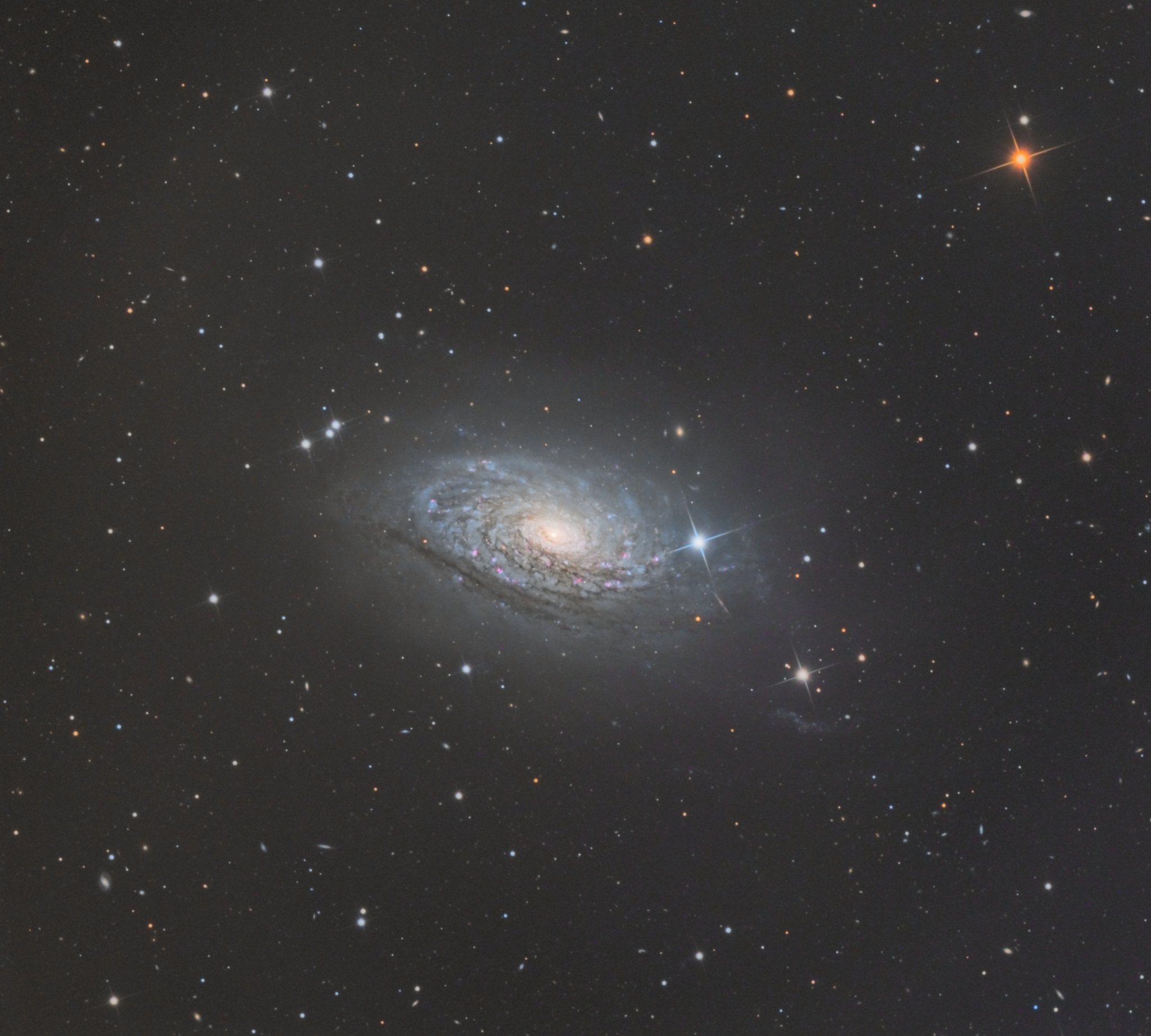
Cick here for full size image
Image credits and Copyright: Paul Mortfield, Tom Zaranek

Cick here for full size image
-
marc jousset
Ngc 2174 The Monkey head nebula
Link for the full size image :
http://www.astrosurf.com/jousset/images ... 1209_f.jpg
Ngc2174 is a large emission nebula located in Orionis.
Image done 30 km from Paris.
http://www.astrosurf.com/jousset/images ... 1209_f.jpg
Ngc2174 is a large emission nebula located in Orionis.
Image done 30 km from Paris.
-
STAVROS HIOS
Re: Submissions: 2014 February
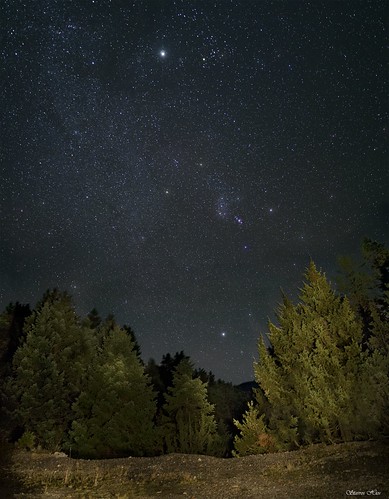
PANORAMA OVER MENALO MOUNTAIN by Stavros Hios, on Flickr
Mod edit: Please see this post at Flickr on how to post images from Flickr: http://www.flickr.com/groups/apods/disc ... 361226070/
Re: Submissions: 2014 February
Green Flash at Sunset
http://www.flickr.com/photos/daemongpf/
Copyright: Josh Knutson Green Flash at Sunset from Solana Beach, CA. Acquired with my Canon T3i and EF 70-300mm lens @300mm.
http://www.flickr.com/photos/daemongpf/
Copyright: Josh Knutson Green Flash at Sunset from Solana Beach, CA. Acquired with my Canon T3i and EF 70-300mm lens @300mm.
Re: Submissions: 2014 February
Subject: M1 The Crab Nebula (image in Ha +RGB)
Copyrights: James Collins
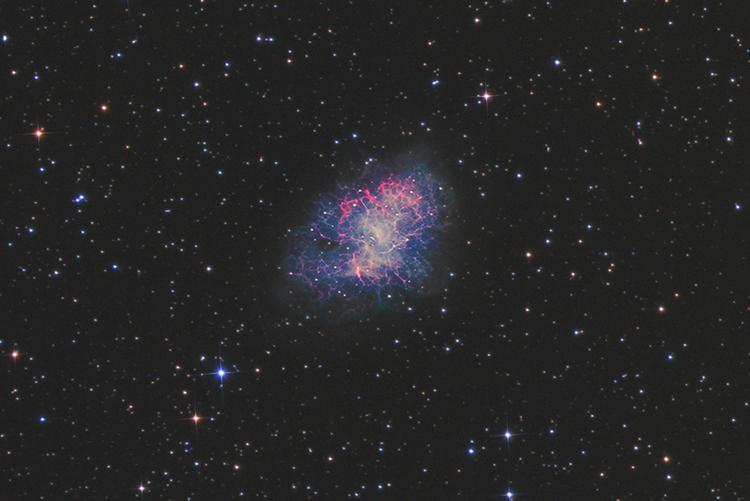
Larger image URL:
http://jimstar11.com/M1_Ha+RGB_44_cropped-3.jpg
Web Site: Meadow View Observatory
http://jimstar11.com/
Copyrights: James Collins

Larger image URL:
http://jimstar11.com/M1_Ha+RGB_44_cropped-3.jpg
Web Site: Meadow View Observatory
http://jimstar11.com/
- geckzilla
- Ocular Digitator
- Posts: 9180
- Joined: Wed Sep 12, 2007 12:42 pm
- Location: Modesto, CA
- Contact:
Re: Submissions: 2014 February
After reading your post and thinking about this a bit I think, as the Mythbusters would put it, this myth is busted.Florian Kainz wrote:Attempting to replicate the Sun Stone of the Vikings
Maybe one of you skywatchers can help me with this…
Just call me "geck" because "zilla" is like a last name.
-
Efrain Morales
- Commander
- Posts: 508
- Joined: Fri Oct 22, 2010 8:15 pm
- AKA: Jaicoa
- Location: Aguadilla, Puerto Rico
- Contact:
Mars on January 31st
Mars on January 31st, 09:32ut. Under average conditions. Olympus Mons at mid right postion clouds over it, At mid left at the limb clouds over the Amazonis region. North is down.
Re: Submissions: 2014 February
NGC 2264, The Christmas Tree Cluster and Fox fur nebula
Full resolution here
https://dl.dropboxusercontent.com/u/759 ... Miller.tif
Full resolution here
https://dl.dropboxusercontent.com/u/759 ... Miller.tif
Last edited by geckzilla on Mon Feb 03, 2014 5:06 am, edited 1 time in total.
Reason: fixing image link
Reason: fixing image link
-
Baphijmm
- Asternaut
- Posts: 2
- Joined: Mon Feb 03, 2014 12:35 am
- AKA: Grady Owens
- Location: Mayhill, NM
- Contact:
Re: Submissions: 2014 February
The Alnitak Region
HiRes image: http://gradyowens.us/images/Alnitak-HaR ... ropped.png
Copyright: Grady Owens
HiRes image: http://gradyowens.us/images/Alnitak-HaR ... ropped.png
Copyright: Grady Owens
Re: Submissions: 2014 February
Iridescent Orion
Alternative URL: http://www.flickr.com/photos/8745343@N04/12281428596/
Copyright: Sebastián García Rojas 2014
Website: http://500px.com/sebagr
Copyright: Sebastián García Rojas 2014
Website: http://500px.com/sebagr
Re: Submissions: 2014 February
That's a lovely image, vpcirc, but I can only see it by clicking the full resolution link. Can you fix that?vpcirc wrote:NGC 2264, The Christmas Tree Cluster and Fox fur nebula
Full resolution here
https://dl.dropboxusercontent.com/u/759 ... Miller.tif
Ann
Color Commentator
-
starsurfer
- Stellar Cartographer
- Posts: 5409
- Joined: Thu Mar 15, 2012 7:25 pm
Re: Submissions: 2014 February
When including Ha in an image, it is a good idea to do longer RGB exposures as the colour is less strong when narrowband is included.Baphijmm wrote:The Alnitak Region
HiRes image: http://gradyowens.us/images/Alnitak-HaR ... ropped.png
Copyright: Grady Owens






